Matador Network's Blog, page 54
April 10, 2025
This Caribbean Resort Is Setting a New Standard for Luxury in Turks and Caicos

Familiarity. That’s what it felt like when I reached Turks and Caicos, a British Overseas Territory located a little under 600 miles southeast of Miami. As a Caribbean native, I felt a sense of home wash over me in the rhythm of the archipelago’s waves and the warmth of its people.
Turks and Caicos — which is made up of about 40 islands and cays, mostly uninhabited, between its two eponymous island groups — is no stranger to luxury. Parts of the islands have long been playgrounds for travelers who crave exclusivity and indulgence. But there’s a new resort on the scene that’s redefining what high-end Caribbean travel looks like: the South Bank resort.
Evolving luxury: How hospitality is developing in Turks and Caicos
Photos: South Bank
During my recent visit to South Bank — part of Grace Bay Resorts, which operates a variety of properties in Turks and Caicos — I had the opportunity to connect with locals who are shaping the future of tourism in Turks and Caicos.
Sitting in on an intimate panel discussion with Grace Bay Resort’s owner, South Bank’s leading developer, and a key figure from the Turks and Caicos tourism and hospitality efforts, I gained insight into the islands beyond their powdery white-sand beaches. Turks and Caicos is evolving, and the presence of Caribbean natives — from Haitian and Jamaican entrepreneurs to Dominican artisans — is having a major impact on its luxury hospitality industry, burgeoning tourism, and economic development.
Turks and Caicos islanders — or “Belongers” — are renowned for their hospitality, creating an environment where visitors not only feel welcomed but also embraced by the entire West Indies as represented across Turks and Caicos. This melting pot of cultures is enriching the archipelago’s identity and offering travelers a unique opportunity to experience a Caribbean destination that’s both diverse and harmonious. And with that as its backdrop, South Bank isn’t just competing with the world’s top luxury resorts — it’s setting a new standard.
Effortless luxury: Arriving at South Bank

Photos: Ariel Laura Metayer and South Bank
Facing Long Bay’s serene waters on Providenciales, the most populous island in Turks and Caicos, South Bank Resort spans 31 acres of prime, oceanfront real estate. South Bank is a newly opened venture with 92 waterfront accommodations designed with comfort and sophistication in mind. From contemporary villas with private docks and boathouses that seem to float above the water to an infinity lagoon that blends into the horizon, the resort caters to travelers who want to experience the finer things in life in a barefoot luxury kind of way.
After arriving at the resort, I was escorted in the island’s premium car service. The staff greeted me with a chilled welcome drink, a refreshing pina colada, setting the stage for the effortless luxury I’d experience in the days to come. This is what makes South Bank an exciting new addition to the Grace Bay Resorts collection. Setting itself apart from the bustle you might find elsewhere, this resort provides seclusion without isolation, giving guests their own private slice of paradise.
Bespoke luxury: Accommodations at South Bank
Photos: South Bank
Despite opening its doors in November 2024, South Bank is rumored to have already caught the eye of celebrities like Nick Jonas and Priyanka Chopra Jonas. Its range of deluxe accommodations has no doubt contributed to its quickly growing reputation.
If you’ve ever dreamed of waking up in an overwater villa without flying halfway across the world to the Maldives, South Bank makes that dream a reality. Its Ocean Estate Villas and Boathouses are a fusion of sleek modern architecture and Caribbean appeal. At either, you can step onto your deck each morning with a personal view of the sunrise over the calm waters of Caicos Banks.
If you prefer something more exclusive, the Lagoon Villas come with private docks, allowing guests to transition from their bedrooms to a morning boat ride in mere minutes. Whether you’re a yachting enthusiast or simply want the convenience of on-demand ocean access, this ranks among South Bank’s most standout amenities. Needless to say, my own yacht experience was an exciting opportunity to see the island in a new and refreshing way (more on that later).
Culinary luxury: Dining at South Bank
Photos: Ariel Laura Metayer
No luxury escape is complete without unforgettable dining, and South Bank delivers at Lua Restaurant. There, the chefs blend local flavors with international techniques to create a range of dishes that have wide appeal while celebrating the archipelago’s culinary heritage.
The Lua Restaurant is open for breakfast, lunch, and dinner, with a pizza service that runs between 11 AM and 9:30 PM. Breakfast items range from free-range omelets to acai bowls. Lunch presents options like red snapper ceviche, whipped feta with Dominican honey, and Wagyu or plant-based burgers. The well-rounded dinner menu plates up everything from oysters or a crispy duck salad to start, followed by grilled meats and seafood or signature plates like lamb tagine or pan-roasted cod with octopus and beans. The Lua Bar, open evenings, also serves elevated Asian-leaning dishes (think chili tofu with crispy wontons, thai beef salad, or Korean crispy corn) in addition to handcrafted cocktails.
Every meal at South Bank feels like an experience, but the resort also stages what it calls “intimate dining experiences” that reinforce its commitment to privacy and luxury. These custom, person-chef-led meals can be held both in-room or at a special setting like the lagoon beach.
One evening, I enjoyed a private beachfront dinner featuring freshly grilled lobster, coconut-infused rice, and a rum pairing that showcased the Caribbean distilleries. It was the kind of meal that lingers in your memory long after you leave the island.
Immersive luxury: Experiences at South Bank
Photos: Ariel Laura Metayer
South Bank offers a variety immersive experiences that are accessible to every guest. One of my personal favorites was the two-hour private charter boat, which can be arranged directly through the resort’s concierge or is already included with certain guests’ accommodations.
My boat experience took me on a ride past the island’s shipwreck landmark that’s now become a tourist attraction of the Caicos Banks, with a stop at a private island. The crew shared local insights and handed out fresh mimosas right before we arrived at brunch on the beach’s shores at Grace Bay Resorts’ main property. Charters are customizable based on group size and duration, making it easy to design a trip that fits your pace.
Back on the property, South Bank’s amenities blend luxury with wellness and leisure. Guests can enjoy a spa treatment inspired by Caribbean botanicals, take part in guided Pilates classes overlooking the water, or glide through the property’s infinity lagoon on a paddleboard at sunset.
For sunrise, I hopped on one of the resort’s complimentary bikes and rode to South Bank’s private beach, taking time to reflect on what it means to be a fruit of these Caribbean islands. Later, I gave into my inner tennis aficionado and caught a ride from resort staff via golf cart to the property’s private tennis court, nestled just beside the pickleball area.
Overall, the energy at the resort is easygoing but elevated — every detail feels intentional, designed to help you slow down and savor island life in style.
Getting to South BankGetting to South Bank Resort is refreshingly simple for an island escape this luxurious. I flew just under four hours from New York (JFK) to Providenciales International Airport (PLS), which offers direct flights from major US cities including Miami, Atlanta, Charlotte, Boston, and Dallas, as well as international hubs like Toronto and London.
Once you land in Providenciales, the drive to South Bank is a 15-minute private transfer or taxi ride from the airport. The concierge can arrange airport pick-up in advance. Whether you’re flying in for a long weekend or an extended stay, the quick access from runway to resort makes South Bank a convenient luxury destination in Turks and Caicos.
Pro tip: If you’re traveling with a group or planning special experiences like a private boat charter, let the concierge know ahead of time — the resort is very helpful in curating a smooth and elevated arrival from the moment you land. 
So You’re Going on a Golf Bachelor Party. Here’s Everything You Need to Know

The social pressure to attend a group gathering and participate in its stated activity can be quite anxiety-inducing. If you aren’t a golfer but find yourself invited to a bachelor party where golf is set to feature heavily in the daily agenda (there’s not much else to do in Scottsdale but golf, eat, and drink), you’re likely twitching at the thought of positing yourself into a culture that from the outside appears staunch and quite exclusive – not to mention expensive as hell. To be sure, golf can be all of those things. But it doesn’t have to be, and whether or not you’re tight with the rest of the bachelor group, the good news is that planning for and participating in a golf-themed bachelor party is actually much easier than it appears.
It’s easier to dress for the golf course than you think
Heading on a golf trip? Check out Matador’s guides to golf travel: Golf Fan? The Indoor TGL League and Its SoFi Center Make for a Great Trip A Lit Course and Glowing Golf Balls Make Arizona the Country’s Top Night Golf Destination The Coolest Airbnbs in Scottsdale for a Golf-Themed Bachelor Party 14 Scottsdale Airbnbs With Pools for a Southwestern Escape This Stunning Hotel Couples Luxury With Community at the Base of Scottsdale’s Camelback Mountain The Best Airbnbs in Scottsdale, Arizona, for a Bachelorette Party 9 Audubon Golf Courses That Prove Golf Can Be Sustainable A Golf Guide to Fort Myers – Islands, Beaches, and Neighborhoods

Photo: tonkid/Shutterstock
If you’ve watched golf on TV, you know the wardrobe – flexy, sporty polo shirt, khakis or Bermuda shorts, golf shoes, and a hat embroidered with the logo of a super-expensive course or a famous golf brand. Non-golfers certainly don’t own a pair of golf shoes or likely even a typical “golf polo.” Calloway hat? No chance. The good news is you may not need to rush out to the nearest Dick’s Sporting Goods to get set up.
Any polo or button-down shirt will do, as the golf dress code generally calls only for a “collared shirt.” Tennis shoes or other athletic shoes will walk the course as well as golf shoes – just don’t bring your football cleats as the goal is to keep the grassy green and fairway nice and pretty. That boat hat sitting in the back of your closet – or really any hat with a brim to block the sun – outta do just fine.
One thing to note is that your pants or shorts should feature large pockets. You’ll want to carry two or three golf balls in there throughout the round in case you lose your shot. Tees are also necessary at the start of each hole. Golf involves a lot of twisting at the waist, so don’t wear overly-tight pants – but most anything that looks decent and isn’t a pair of jeans or cargo shorts will be welcome.
You can rent or borrow everything you need
Photo: PeopleImages.com – Yuri A /Shutterstock
Another thing to note about golf is that it’s an expensive hobby. Greens fees – the cost to play a round – can run anywhere from $20 at a small par 3 course to north of $100 at higher-end public courses. If your crew is “fortunate” enough to gain access to a private or country club course, expect to pay even more than that.
Those prices are before equipment like clubs, tees, and golf balls are considered. It’s not uncommon to spend more than $800 on a set of clubs. Fortunately, this is where you can get a break. Unless you plan to make golf a continued part of your life once this bachelor party is over, there’s no need to drop that kind of money. You can typically rent clubs from the course(s) you play at or from a local retailer for between $15 and $50 per round, or a bit more if you playing multiple rounds. If the bachelor party is in Scottsdale, for example, Traveling Caddy rents clubs that you can keep for the duration of your trip. In South Florida, Florida Golf Club Rental does the same thing. These rentals can include golf balls, tees, and greens repair tools, so you can literally show up to the trip empty handed without having to worry.
If your crew is playing a Par 3 course where the holes are short and a full set of clubs isn’t required, all you really need is a nine iron, a wedge (like a pitching wedge or sand wedge) or “chipper” as they’re often called, and a putter. Many exclusively Par 3 courses have these available for golfers to use – call ahead to make sure. While you may be able to borrow these clubs from a buddy, most courses have a policy stating that each golfer has their own equipment, so unless your buddy has extras they can bring, you may be out of luck.
It’s more about the camaraderie than the actual golfing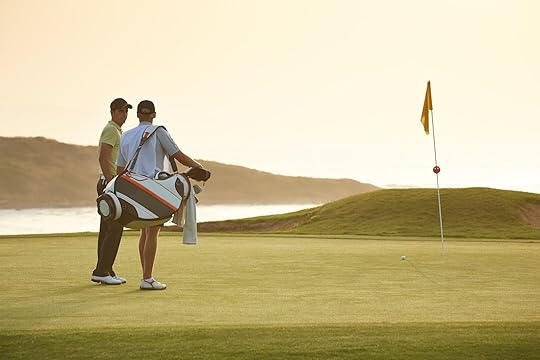
Photo: KOTOIMAGES /Shutterstock
Lastly, while golf can be an intimidating sport to jump into – especially when you’re surrounded by experienced players – in the context of a bachelor party it’s mostly a social activity. There’s plenty of time for banter, side bets, beer drinking, and general camaraderie on the course. Only about half of golfers ever play under 100 strokes in a round, despite the stated par for an 18-hole course generally being 72.
You’re there to celebrate your buddy getting married – and that should remain the priority. Don’t stress over the golf. You’re going to make some bad shots, but so is everyone else. Laugh it off and raise a toast. 
The Top US National Parks for Wildlife Are Not Where You’d Expect
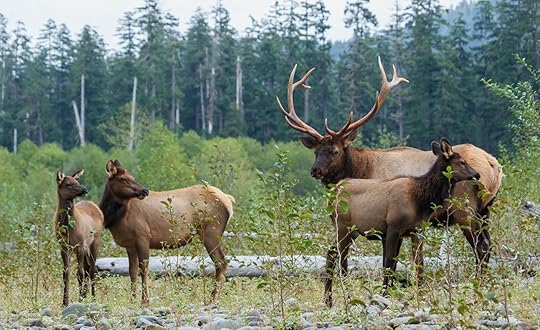
The opportunity to observe wildlife in their natural habitat is one of the most cherished experiences for visitors to US national parks. That’s possible because US national parks are some of the most important conservation areas in North America, with roughly 600 threatened and endangered species — or one-third of all endangered and threatened species in the country — found in National Park Service sites.
And the fact that the US protects wildlife has a substantial economic impact. In 2022 alone, expenditures on wildlife-related trips and equipment reached $250 billion in the US, supporting 2.7 million jobs and generating an estimated $590 billion in economic output. Within national parks specifically, wildlife viewing contributes in a major way to local economies. In Yellowstone National Park alone, it’s estimated that having wolves in the park brings in more than $80 million a year in tourism spending.
But according to a new analysis of government and wildlife data, the best national parks for wildlife aren’t the ones you’d expect. The study was done in light of National Park Week (April 19-27) by Kühl, an independently-owned company specializing in mountain-ready outdoor gear and clothing. It found that travelers across the country have access to fantastic wildlife in national parks, but the best places to spot wildlife on protected lands aren’t where you’d expect.
Yellowstone National Park’s Lamar Valley is often considered “America’s Serengeti.” But when you take into account all species found around the country, it didn’t come out on top. In fact, it only ranked as the ninth best park for wildlife spotting. Here are the parks that came out on top.

Photo: Kuhl
To rank the parks, Kühl employees included all wildlife in national parks, not just megafauna like bison and bears. That’s likely why Yellowstone National Park didn’t take the top spot.
The best national park for wildlife overall: Grand Canyon National Park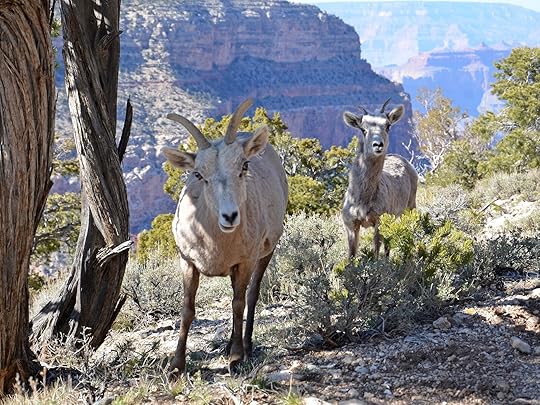
Desert bighorn sheep in Grand Canyon National Park. Photo: Grand Canyon National Park/Public Domain
Grand Canyon National Park took the top spot, primarily because it “spans across different elevations and climates, creating unique blends of several ecosystems that are home to a wide range of species.” It ranked first for bird-watching, with 447 bird species in the park, and second for mammals (91 species), reptiles (58 species, including Gila monsters), and spiders and scorpions (142 species). In addition to Gila monsters, other unique species visitors can see in the park include California condors, Mexican grey wolves, the pink-colored Grand Canyon rattlesnake, and desert bighorn sheep.
Where to stay: 13 Unique Airbnbs Near Grand Canyon National Park
After Grand Canyon National Park, the top four best places for spotting wildlife in national parks included:
Great Smoky Mountains National Park: First for amphibians, first for slugs and snails, first for spiders and scorpions, third for mammalsBig Bend National Park: First for reptiles, second for birds, fourth for mammalsCarlsbad Caverns National Park: Fourth for birds, fifth for reptiles, seventh for mammalsRedwood National Park: First for mammals, seventh for fish, seventh for amphibians, ninth for birdsThe best national park for birding: also Grand Canyon National Park
A California condor in Grand Canyon National Park. Photo: Shaylin Tombs/Shutterstock
One of the major reasons Grand Canyon took the overall top spot is because of its many, many bird species. It’s home to an impressive diversity of feathered friends, making it one of the most significant areas for bird conservation in the United States. In fact, in 2014, it became an internationally recognized “Important Bird Area” (a program managed in the US by the National Audubon Society). The park supports rare species like the Mexican spotted owl and Southwestern willow flycatcher, and is home to well-known birdwatching sites like Yaki Point, where it hosts hawk-watching events and bird lectures and events.
Where to stay: 7 Great Hotels Near Grand Canyon National Park
The best national park for mammals: Redwood National Park
Photo: Tom Reichner/Shutterstock
Redwood National Park’s remote location far from any major airports — not to mention its healthy forests and sweeping coastlines — makes it a haven for large species, including Roosevelt elk. That gave it the edge, taking the top spot for the best national park in which to spot mammals. In addition to elk, Black-tailed deer are also common, and visitors may even see elusive predators such as black bears and mountain lions. Smaller animals it’d be almost impossible not to see include squirrels and chipmunks, but you may also see rarer small creatures like fishers, martens, and river otters.
Where to stay: 15 Magical Airbnbs Near Redwoods and Sequoia National Parks
The best national park for reptiles: Big Bend National Park
An earless lizard in Big Bend National Park. Photo: Matt Sells/Shutterstock
Big Bend National Park in Texas has more than 30 species of snakes, 22 species of lizards, and 4 species of turtles. That’s partially due to the park’s many habitats ranging from floodplains to mountain ranges. Between those canyons and summits, you may be able to find species like the Texas horned lizard, diamondback rattlesnake, and checkered whiptail. There are also poisonous snakes (so give them a wide berth) like rock rattlesnakes and the Trans-Pecos copperhead. The park also ranked as fourth-best for spotting mammals, including javelinas (also caled peccaries) and bobcats.
Where to stay: 11 Airbnbs Near Big Bend National Park
The best national park for amphibians: Great Smoky Mountains National Park
Photo: Leahs27/Shutterstock
Great Smoky Mountains National Park is a hotspot for amphibians; in fact, it’s known as the “Salamander Capital of the World.” You can find more than 30 salamander specie in the park, plus more than 14 frog and toad species. Some are hard to find, while others, like the Hellbender salamander, can grow up to 29 inches long. Great Smoky Mountains also took the top spot in terms of slugs and snails, with more than 189 “slow-moving goo-makers,” and the top spot for spiders and scorpions (969 species, the most of any park in the system).
Where to stay: 14 Gorgeous Airbnb Cabins Near Smoky Mountains National Park
The best national park for insects: Hawai’i Volcanoes National Park
PHoto: BlueBarrowPhoto/Shutterstock
Anyone whose been to Hawai’i knows that the state is full of insects, all of which are essential to maintaining the state’s gorgeous natural landscapes. So it’s no surprise that Hawai‘i Volcanoes National Park on the big island is the best national park in the country for spotting insects. And it’s not just teeny-tiny critters you’ll find: the park is home to the bright orange Kamehameha butterfly (one of only two native butterflies in the state), and the easily recognized happy face spider, known for its distinctive back markings. You may also see the largest dragonfly in the US, the giant Hawaiian dragonfly, with a wingspan of up to six inches. Unfortunately, the park also has several invasive species that could threaten the park’s ongoing health, such as Argentine ants, which pray on critical pollinator species.
Where to stay: The Best Airbnbs on Hawaii’s Big Island
The best national park for fish: National Park of American Samoa
Tangs in National Park of American Samoa. Photo: National Park of American Samoa/Public Domain
It should come as no surprise that American Samoa, a national park that’s more than one-third underwater, would take the top spot for fish variety. It’s one of the least-visited national parks in the entire NPS system, with an average of 10,000 to 20,000 visitors per year, total. For comparison, Rocky Mountain National Park has 4.5 million visitors per year. So if you visit, you’re likely to have the sweeping beaches nearly to yourself. While snorkeling, paddling, or scuba diving, you could theoretically see more than 800 species of fish, not to mention hundreds of coral varieties. Easy-to-recognize species include damselfish, wrasse, and colorful tangs, but the park is also home to extremely unique species, such as the armored searobin. It’s a bizarre fish that “walks” on the ocean floor using its fins like legs. It was discovered living at a depth more than two miles below the surface in 2019.
The study’s methodology was fairly straightforward, starting with analyzing the number of animal species in each park using official National Park Service data. Each wildlife type was then assigned a weight, with mammals generally being considered more appealing to visitors than slugs. Species that are currently in the parks were given additional weight, as opposed to species that have historically been in the parks. The results were then calculated for each park by type of species, with the final results appearing in the Kühl report. 
April 9, 2025
Shabang Music Festival Is Like the Cheap, Early Years of Coachella
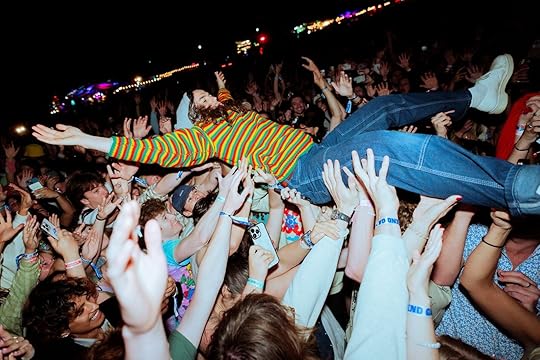
In San Luis Obispo, California, an independent music festival is expanding year after year after year. Ask music aficionados in the area, and they’ll tell you it’s quickly taking over the regional entertainment scene.
But with rapid expansion comes growing pains, and the founders of Shabang, the Central Coast’s biggest and fastest-growing music festival, have faced plenty of challenges while hosting the massive gathering in a quaint, somewhat isolated college town. It’s perhaps similar to what Coachella itself may have faced in the Coachella Valley desert, during its days of setting festival trends in the late 1990s.

The author at Shabang in 2017. Photo: Molly O’Brien
Shabang began in 2014 as a small gathering of about two dozen friends on Cuesta Ridge, a mountain just north of San Luis Obispo in Los Padres National Forest. Within a few years, it outgrew that venue and moved to a local lakeside park. This is where it was when I attended while in college at California Polytechnic State University San Luis Obispo, about a decade ago.
Back then, my friends and I looked forward to this fun, intimate music festival. It happened every spring and served as our signal that summer was coming — and, with it, a sense of freedom and sunshine.
A shuttle ran from a stop near campus for a rate of around $10 to corral us students back and forth, and it was always an afternoon of sunny, spring vibes. We’d dress up in our festival clothes and cheer on whatever musicians were taking the stage. Often, it was a Cal Poly band made up of students like us. It felt pure.
Today, what I remember as a quaint music festival has continued to grow, transforming into a massive, multi-day event at an even larger venue.

Coachella circa 2016 or 2017. Photo: Suzie Dundas
Coachella wasn’t always the enormous cultural movement it is today. It was inspired by an anti-establishment movement against hefty ticket prices and venues controlled by large corporate entities — and, supposedly, founded by promoters seeking a cool new place to host a show for folks who just wanted to listen to music. Coachella’s first strums are said to trace back to a 1993 Pearl Jam concert for 25,000 fans at the Empire Polo Club.
This show proved the venue worthy of hosting such large-scale events, and the inaugural Coachella Festival was hosted in October 1999, just three months after the disaster of “Woodstock ’99.” That poorly received festival motivated Coachella organizers to offer attendees a safe, comfortable festival experience amid the fallout. According to a 1999 story in Rolling Stone, tickets to the first Coachella sold for $50 for each day, with roughly 37,000 tickets sold between Saturday and Sunday.
View this post on Instagram
A post shared by Coachella (@coachella)
One difference between Shabang and Coachella is that while Coachella was considered “alternative” and against traditional music festival culture for the time, it was never exactly poorly funded. Coachella was co-founded by two well-known entertainment industry executives and organized by Goldenvoice, a highly successful Los Angeles-based concert production company and music festival promoter.
But like Shabang today, Coachella claimed to be on a quest for uniqueness and celebration of alternative artistry. According to interviews from the time, promoters intentionally aimed for a diverse lineup, booking performers based on talent as opposed to preexisting fame. This made it unique in the festival scene of the time, and Coachella hosted rock musicians such as Beck, Tool, Rage Against the Machine, and Morrissey during its inaugural year.
The festival’s popularity proved successful enough, and in 2001, the event shifted to April to avoid the Greater Palm Springs region’s 100-plus-degree early autumn temperatures. It expanded again by adding a third day in 2007, and a second weekend in 2012. 2003 was the first year it allowed camping on the festival grounds, and in 2004, with Radiohead and The Cure as headliners, the festival officially sold out for the first time, cementing its status as a world-class cultural event.

Today, Coachella is known across the world for its fashion and celebrity attendees, almost more than its music. Photo: Tim Remer/Shutterstock
I remember stepping out of work with my computer for my 15-minute break in 2017, timed to mirror when Coachella tickets went on sale, I sat in the online waiting room for much longer than 15 minutes (sorry, Cal Poly coffee shop), and was elated when I finally scored two of those coveted tickets for weekend one.
Around the same time, in San Luis Obispo, Shabang was transitioning to its new, larger venue, becoming a more significant part of the student and local experience each spring. But there was no need for a waiting room to get tickets – nor is there now.
In 2025, Shabang Music Festival will take place over two days on May 2 and 3 at San Luis Obispo’s Dairy Creek Golf Course. The lineup includes big-name artists like Goth Babe and Wallows, and has options for camping, similar to Coachella. Prices have gone up, starting at $269 for two-day general admission tickets. Single-day tickets go for $169.
It’s a leap in cost. “Not quite Coachella prices, but still pretty steep for a small festival in the middle of nowhere,” is what I thought to myself when I first saw this year’s announcement.
As someone wearing the rose-eyed glasses of nostalgia while thinking back about my own time as a Cal Poly student, paying what now feels like pennies for a Shabang ticket, I’ll admit I was anxious about the event’s rapid changes. So I decided to learn more about the shift.
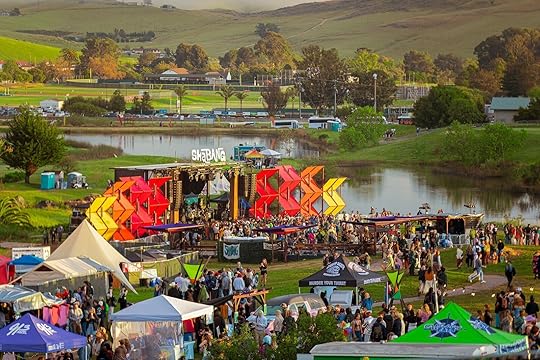
Shabang is bigger than it was, but still much smaller than Coachella. Photo: Shabang
I spoke with one of Shabang’s co-founders and current marketing director, Greg Golf. Surprisingly, he told me the festival doesn’t actually make a profit. Operational costs are higher than the profitability, making it what he calls a “labor of love.”
It’s challenging to produce, he says, as the audience primarily skews under 25 — an age group without large, expendable incomes. Further, San Luis Obispo itself isn’t easy to reach. The airport has only five gates, and it’s a three-hour drive from both Los Angeles or San Francisco. That’s less of an issue for Coachella, which is just under two hours from Los Angeles and is served by the much larger Palm Springs International Airport.
“We never set out to do this. This was never our goal,” says Golf on the festival’s rapid growth and widespread success. “We really just wanted to put on an event that highlighted the Central Coast music scene and the beauty of what we have in San Luis Obispo.” He anticipates roughly 12,000 attendees at 2025’s festival. It’s a fraction of Coachella’s 125,000 people per day, but still a lot to manage.
But Golf and his team don’t let the size go to their heads. One detail that keeps them down to earth, he says, is their commitment to staying as sustainable as possible. His team constructs the entire festival by hand using recycled wood over 12 days.
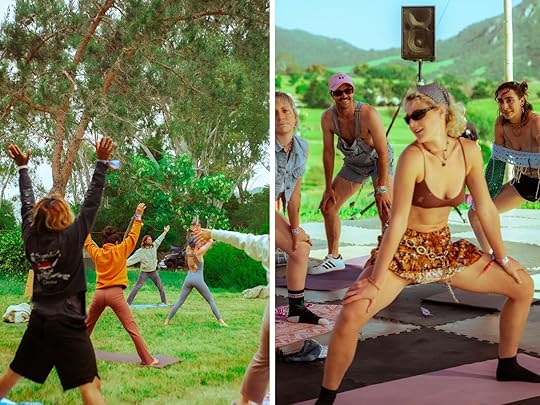
Yoga and movement classes are part of the Shabang lineup and open to all attendees. Photo: Shabang
This year, 60 Shabang artists will take over four stages, with more than 50 food, beverage, and merchandise vendors on site. The event will also have a lineup of experiential art installations, yoga and movement classes, jam sessions, music lessons, and more. Golf says he hopes the event will create an experience he and his co-founders, who arrange the festival in their free time, never imagined possible at their first Shabang more than a decade ago.
Their labor of love might not make any money for their own pockets, but it certainly drives dollars into the local economy of the 50,000-person college town. But despite the heavy cash flow into the hotels, restaurants, and stores of San Luis Obispo, the town’s locals have mixed feelings about the festival’s growth and presence in their city.
“We’ve just got to be nice and respectful and work together,” Golf says on the occasional SLOcal resident’s distaste. “It’s good for the town and the economy.”
For example, he says short-term rental prices in town go up hundreds of dollars a night when they announce Shabang’s lineup.
Regardless of public sentiment, Visit SLO CAL, the region’s destination marketing organization, is a proud sponsor of the event, proving it has significant support from a local tourism industry’s perspective.
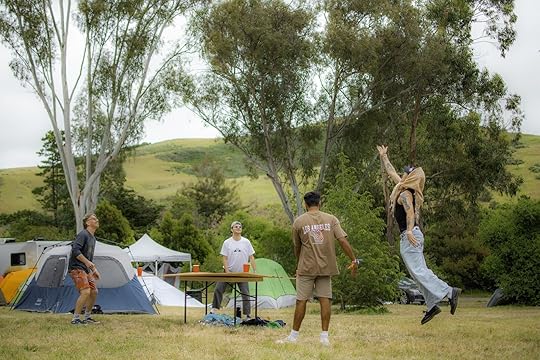
Many of Shabang’s campers buy food and supplies in San Luis Obispo, providing a boost to the local economy. Photo: Shabang
Shelby Pinckard, a spokesperson for Shabang, shared that the festival brings more than $1 million to the region’s tourism industry annually. Local businesses, including restaurants, grocery stores, and hotels, she says, are experienced with the festival and well-prepared for the influx of visitors.
Over in Coachella land, I reached out to Visit Greater Palm Springs about their take on Coachella’s visitors, as well as how it works to educate travelers on education and responsible visitation. Coachella is estimated to bring in about $700 million dollars per year into the Greater Palm Springs economy.
A representative from the Visit Greater Palm Springs organization confirmed the region needs the festival and supports the event, and wants to ensure their travelers feel welcome — while encouraging out-of-towners to be respectful visitors. Coachella shows that even if towns aren’t initially thrilled with the success of such tourist-driven events, they can provide vital support for some local economies.
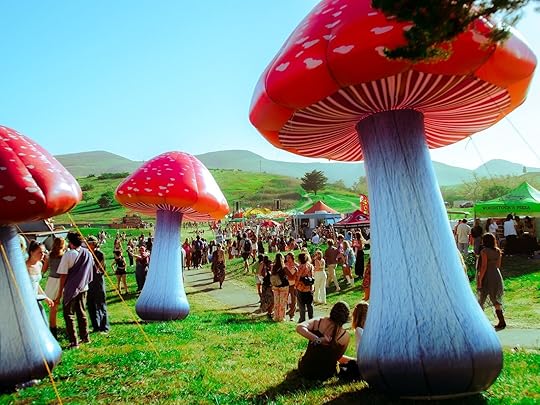
Photo: Shabang
As a former and current attendee, I’m eager to see how much bigger Shabang can get while still staying true to its roots. Fortunately, the team says it’s doing everything it can to maintain the festival’s integrity.
So, what’s the difference between Coachella and an up-and-coming grassroots music festival like Shabang? From my research and conversations with Shabang organizers, it seems like a key difference are the long-term goals. Golf and his team seek growth and return on investments, sure. But above all, they want it to stay unique and specialized in the existing music festival landscape. This is a sentiment shared by other midsized festivals in the state, such as Same Same But Different near San Diego, and the High Sierra Music Festival closer to Lake Tahoe.
In speaking with Golf, it’s clear he wants to preserve the community atmosphere of that original 20-person festival a decade ago through methods like hiring people who understand and respect the town’s unique needs, and who are invested in preserving Shabang’s special feeling.
After my conversation with Golf, my take on the continuous expansion of Shabang is that it won’t ever become the next Coachella. Golf agreed it’s niche, especially with an audience that skews younger, and a location harder to reach than Palm Springs. That’s part of the reason he feels confident it’ll never become an Instagram sensation that draws inspired celebrity influencers – an element that led to Coachella’s popularity and success over the last two decades.

Though both towns have roughly the same population, San Luis Obispo doesn’t have the infrastructure to support major-scale ongoing tourism like Palm Springs (near Coachella) does. Photo: joojoob27/Shutterstock
As someone familiar with SLO’s small-town size and infrastructure, I worry that San Luis Obispo could never support the 200,000-plus attendees of Coachella, were Shabang to ever reach that scale. Even a small extra influx of people in San Luis Obispo can cause everything from traffic backups to lines at restaurants to spikes in the price of goods and services.
But Golf told me the team is well aware of that risk, and plans to keep the festival contained enough to keep the same small, personalized experience it had in its earliest years. This way, when people meet each other, they can connect on a more genuine level, he says.
“Coachella is the festival that you go to to be seen, to show people you are there, and also to see the biggest artists in the world,” says Golf. “[At Shabang,] you’re not going to a festival with 180,000 people… you will meet people and stay connected with people.”

Photo: Shabang
And as most avid festival-goers know, that’s a huge part of what music events are about: Human connections, inner connections, physical, mental, and spiritual connections through music. IN many ways, Coachella feels like the opposite, with celebrity fashion and the who’s-who of attendees nabbing bigger headlines than the music itself.
Compared to Coachella, Shabang is still a sleepy festival in the mountains. But for attendees who care more about the feeling of the music than the fashion and fame, festivals like Shabang may be the future of concert travel. 
Formula 1 Returns to Las Vegas This Year With More Affordable Tickets and Year-Round Events

The Formula 1 Heineken Las Vegas Grand Prix returns for a third year in a row on November 20 through 22 — and it’s set to be more accessible than past years while keeping an air of luxury.
This year, general admission starts at $50 for single-day access and $400 for three-day access in the Flamingo Zone by Caesars Rewards — the lowest prices offered since the event launched. Heineken GA+ options now include bleacher seating at $800. Grandstands, from the main grandstand to the new option at Turn 3 go for between $875 and $1,750. For Nevada residents, priority access and discounted pricing reinforce a growing emphasis on community inclusion. (Check here for tickets.)

Carlos Sainz of Spain driving (55) the Ferrari SF-24 on track during qualifying ahead of the F1 Grand Prix of Las Vegas at Las Vegas Strip Circuit on November 22, 2024 in Las Vegas. Photo: Clive Mason/Getty Images
The most ambitious new development is the Grand Prix Plaza, a permanent, 39-acre complex that opened on March 29. It houses North America’s largest year-round immersive F1 attraction led by three core experiences:
F1 X: A 4D exhibition with historic cars, interactive exhibits, and engineering challenges (starting at $79; $59 for locals).
F1 DRIVE: Karting on a section of the Las Vegas Strip Circuit, complete with DRS zones and LED steering wheels ($37; $30 for locals).
F1 HUB: A tech-forward central zone with racing simulators, retail, and elevated dining. Locals receive a 10 percent discount.

View from the Bellagio Fountain Club. Photo: Las Vegas Grand Prix
The Plaza will temporarily close in late summer to transition into Grand Prix mode, but its year-round programming marks a significant investment in keeping F1 fans entertainment beyond race weekend.
In addition the more affordable and year-round options, Las Vegas remains a place to absorb the luxury atmosphere of F1, too. There’s the $2,500 Club Paris at Paris Las Vegas, for one, or the $25,000 Gordon Ramsay at F1 Garage, which includes Paddock access and fine dining curated by the celebrity chef. Bellagio Fountain Club offers direct views of both the track’s longest straight and the hotel’s iconic fountains — plus exclusive chef experiences and access to the Winner’s Stage — with prices starting at $7,750. An all-access experience in the Paddock Club with Wynn Grid Club goes for $20,000, and the Paddock Club Rooftop starts at $9,500.
A race weekend unlike any other
The East Harmon Zone by Virgin Hotels Las Vegas on the Heineken Silver Stage. Photo: Las Vegas Grand Prix
On track, race sessions now begin two hours earlier than in 2024, with the main event slated for 8 PM Saturday night. New grandstands — including one dedicated to Lewis Hamilton — and additional access to the F1 ACADEMY paddock increase the ways fans can engage with the sport and its athletes. The ACADEMY series, which concludes its season in Las Vegas, marks a significant push to elevate women’s motorsport visibility.
Fan zones continue to expand year after year, offering live driver interviews, A-list music acts on the T-Mobile Stage, and activations by partners like Heineken, Caesars Rewards, and Virgin Hotels. Each branded zone provides tailored experiences — from craft cocktails to merchandise drops.
“Grand Prix Plaza represents a significant investment in the future of Formula 1 in Las Vegas,” Emily Prazer, president and CEO of Las Vegas Grand Prix, Inc. and chief commercial officer for Formula 1, said in a press release. “These new attractions will offer unprecedented access to F1, giving many fans their first up-close look at a Formula 1 car before stepping into a racing simulator or even karting on a portion of the Las Vegas Strip Circuit. As part of our steadfast commitment to Las Vegas, we are thrilled to offer significantly discounted pricing to locals so that Grand Prix Plaza is an easily accessible community asset all year long. Grand Prix Plaza is one of the jewels of F1 in North America, and we know it will provide access and experiences that will grow the sport’s fan base.” 
Golf Fan? The Indoor TGL League and Its SoFi Center Make for a Great Trip

Golf is officially a team sport. It’s also now being played in an arena (the SoFi Center) in front of fans encouraged to shun the sport’s “library voice” ethos and hole-to-hole meandering in favor of engaged viewership on a big screen, all while remaining seated in one place. That’s thanks to, of all people, pro golf legends Tiger Woods and Rory McIlroy, who in 2022 partnered with sports executive Mike McCarley to form TGL, short for Tomorrow’s Golf League, with the goal of endearing the sport to a younger, tech-savvy audience.
What’s up TGL and how is it different from the PGA Tour?View this post on Instagram
A post shared by TGL (@tglgolf)
The idea for a new, indoor, and tech-focused golf league came from conversations between Woods, McIlroy, and McCarley about the need to modernize golf for a wider, more diverse audience. This convo led the trio to devise a league that would shun the traditionally expansive golf course in favor of a compact play area that incorporate the natural features of a course with digital elements. TGL plays indoors, primarily at the SoFi Center in south Florida. The league consists of six place-based teams, each comprised of golfers from the PGA Tour:
Those who follow golf are aware that golf is historically an individual sport – one player wins, not one team. The new format makes the sport closer to professional cycling events where individual performance is tracked and celebrated (and legends are born on their own performance, not their team’s) but ultimately, it’s a team effort and each player has a role to fill. The league’s first season wrapped up in March with Atlanta sweeping New York two games to none in a best-of-three series, claiming the first SoFi Cup. The next season tees off in January of 2026. Seasons are designed to avoid big PGA events and matches are broadcast on ESPN.
Matches consist of two three-team players and take two hours to complete. There are singles (one-on-one) segments and team play. Matches consist of six holes, with team play being best ball formant and one-on-one following a traditional format. Total points from Triples and Singles segments are combined with the lowest score winning, and if it’s a tie, a “closest to the pin” tiebreaker round decides the winner.
Players hit drives and long wedge shots into a simulator, but putting and short chips take place on and around an actual green with varied contours and features depending on the hole (so there’s no blaming a missed put on the computer).
How to plan a trip to SoFi Center
Photo courtesy TGL
The SoFi Center is brand new – and it stands out, as it’s located on the Palm Beach State College campus in Palm Beach Gardens. The nearest airport to the SoFi Center is Palm Beach International Airport (PBI), located approximately 10 miles south of the SoFi Center. PBI offers a variety of domestic and international flights, making it a convenient choice for travelers. Upon arrival, rental cars, taxis, and rideshare services are readily available to transport you to your accommodation or directly to the arena.
The arena being located in a college area works to your benefit as a traveler. First, there are ample residential neighborhoods around with a variety of Airbnbs on offer. The beach is nearby, as is Downtown Palm Beach Gardens, which features shops both local and well-known chains, restaurants, and entertainment. The area is largely suburban, but native wildlife thrives at Frenchman’s Forest Natural Area and the Philip Hulitar Sculpture Garden, both of which offer short hikes. If you’re bringing the family, head to Downtown Carousel and the nearby Rapids Water Park. The Society of the Four Arts in nearby Palm Beach offers art exhibitions, live performances, lectures, and botanic gardens.
Golf courses near SoFi CenterWhether intentional or not, SoFi Center is effectively surrounded by golf courses. Right on the beach to the east of the arena is the Lost Tree Golf Club. The most renowned course in the area is the PGA National Resort, located just two miles away. Here you’ll find five championship courses, including the famous Champion Course, home to the PGA Tour’s Cognizant Classic in The Palm Beaches. Its challenging “Bear Trap” is legendary among golfers. Other notable courses at the resort include the Palmer Course, designed by Arnold Palmer; the Fazio Course, the Match Course, emphasizing strategic play; and the Staple Course, a quick nine-hole par-3 layout.
Other courses nearby include the Sandhill Crane Golf Club, about 6 miles from the SoFi Center. Owned by the city, this public course offers a unique experience with its natural wetlands and a recently added par-3 course called “The Nest.” To the north, Abacoa Golf Club in Jupiter offers a scenic, player-friendly public course. Private options include Old Palm Golf Club, known for its Raymond Floyd-designed championship course, and Frenchman’s Reserve, with its luxurious Arnold Palmer layout. North Palm Beach Country Club, a public course redesigned by Jack Nicklaus, is also available. 
Chattanooga Is Now the First ‘National Park City’ in North America. Here’s What That Means.
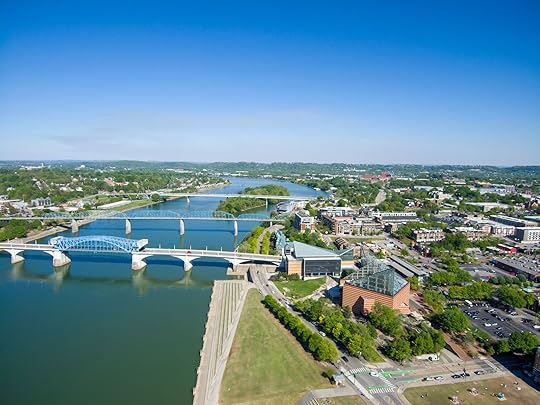
In a landmark achievement for urban sustainability, Chattanooga, Tennessee, has been named North America’s first National Park City by the UK-based National Park City Foundation. Once deemed “the most polluted city in America” in 1969, Chattanooga now joins London and Adelaide as one of only three cities globally to hold the National Park City designation — only adding to its reputation as a remote-friendly adventure hub.
The National Park City movement, inspired by the sweeping vision of national parks but independent from the National Park Service in the United States, aims to make urban areas greener, healthier, and more deeply connected to nature. It emphasizes long-term, grassroots efforts to improve air and water quality, access to outdoor spaces, and biodiversity within the urban fabric.
For Chattanooga, this recognition affirms the city’s ongoing reinvention. Industrial decline in the late 20th century prompted local stakeholders to reimagine the city’s relationship with its environment. What followed was a decades-long campaign to clean the air, revitalize the downtown riverfront, and transform brownfields into parks, trails, and public gathering spaces. Today, Chattanooga is known as an outdoor destination with more than 150 miles of trails, a growing urban farming movement, and active conservation programs.
More like thisTravelAll the Chattanooga Outdoors, Arts, and Dining You Need for a Long WeekendTo achieve this status, Chattanooga submitted an application addressing 23 criteria, including climate adaptation, environmental education, equitable greenspace access, and sustainable agriculture. The application process underwent peer review by international experts and leaders from existing and candidate National Park Cities. Final approval followed after gathering more than 5,600 signatures from local citizens and organizations.
“We’ve used the National Park City movement to encourage folks to think about Chattanooga as a city in a park rather than a city with some parks,” Chattanooga Mayor Tim Kelly said in a press release. “The outdoors is our competitive advantage; it’s at the heart of our revitalization story as well as the core of our identity. We’ve always known how special Chattanooga’s connection to the outdoors is, and now it’ll be recognized around the world.”
The designation comes amid a growing global movement. London received the first National Park City title in 2019, followed by Adelaide in 2021. Several other cities — including Breda, Glasgow, and Southampton — are currently nominated or exploring the pathway to join.
To mark the milestone, Chattanooga will host a citywide celebration on April 19 during Earth Week. The event will feature more than 50 public activities, a keynote presentation by movement founder Dr. Daniel Raven Ellison, and performances by local artists. 
April 8, 2025
Is Saudi Arabia Safe for Women? On Safety, Culture, and Breaking Stereotypes.

“Is Saudi Arabia safe? For women?” was the most common question my friends and family asked when I told them about my upcoming trip to Saudi Arabia.
Even though I would respond, “Of course I’ll be safe. It’s a very progressive country,” the question always gave me pause. I had never been to the Middle East, and this line of questioning had me mulling over my own preconceived notions about Muslim nations and the complex history the USA has had in the oil trade.
Some travelers may lump Saudi Arabia together with other Islam-fundamentalist nations, especially regarding women’s rights and strict religious doctrine and laws. But as I traveled through Riyadh and Jeddah, I had the chance to experience the beauty, hospitality, and complexity of this kingdom, leading me to think many of the common misconceptions and stereotypes about Saudi are based primarily on misinformation and media bias. I wondered if Saudi Arabia was safe for women, but was it a question I’d ask of every other country, too?

Saudi Arabia’s visitor economy is growing, and western tourists are a big part of that. Photo: The Road Provides/Shutterstock
As a white woman from the South, I felt welcomed and at home in Saudi, despite being in a place that should have felt entirely foreign to me. While traveling throughout the country, our guide, Khalid Took, shared the story of a Romanian traveler who became stranded in Saudi Arabia when the country closed its borders during the COVID-19 pandemic. She had planned to stay with a family in Jeddah for just seven days, but that turned into five months. The family took her in and promised they would get through the pandemic together. And they did.
Whether I was in fine dining restaurants, art galleries, or just people-watching on the street as pilgrims on their way to Mecca went by, I rarely felt any concern for my safety or personal comfort beyond what I’d feel in any other country. Saudi Arabia’s foundation is deeply interwoven with the Islamic faith, a key tenet of which is caring for strangers and showing hospitality and kindness. What struck me most about this was the profound sense of security. I knew that no matter what happened, like a pandemic, or even getting stranded, I would be taken care of.

Riyadh’s Bujairi Terrace at night. Photo: Skill Surface Graphics/Shutterstock
“You could have told me 20 years ago that there would be skyscrapers in the middle of the desert, and I would have laughed and said, ‘Impossible,’” explained Took, as we drove into the city center of Riyadh. “But now, truly, nothing is impossible here. It gives you a feeling of infinite possibility.”
That sense of possibility stayed with us as we explored the country. Being in this Middle Eastern kingdom felt almost mystical, like stepping into a fairy tale. It looked and felt dreamy, like stepping into Dune‘s spice planet of Arrakis or Star Wars’ Tatooine. Even in the middle of December, the warmth wrapped around me, the dry desert heat mixing with hazy sepia skies that melted into a sand-swept landscape.
Riyadh sat as a cutting-edge city within the desert, with dazzling lights twinkling in the dusk. We walked past stunning art displays and stayed in luxurious hotels with state-of-the-art everything, while men wore their traditional garb and headscarves, and women wore niqab or hijab coverings. Not once did anyone give us American women a second glance.
As Saudi Arabia only recently opened to Western tourism (in 2019), not many people have traveled there. However, with Instagram-worthy shots of AlUla and news of the ever-expanding tourism market, more travelers are adding Saudi Arabia to their list of places to visit. In 2019, 17.5 million international tourists visited, and that number increased to 30 million by 2024.

A tourist at Diriyah, near Riyadh. Photo: Benny Marty/Shutterstock
Recreational tourism is still relatively new to the country, giving Saudi a chance to see how other countries have built their internal tourism infrastructures, then build it better while still staying true to its convictions. Visitors can stay in luxurious overwater bungalows and cruise ships on the Red Sea, all without compromising on the country’s alcohol-free policy, or glamp in incredible desert tent setups designed with sustainability and environmentally friendly practices. Even for locals, the infrastructure is impressive: everything from healthcare to tax records can be accessed through a single government app on your phone.
And while the Saudi Kingdom continues to expand its tourism sector, with new trains, hotels, and easier ways for visitors to explore, the country’s history adds to its unique character. For hundreds of years, Arabian tribes lived in regions rarely occupied by outside conquerors due to their harsh desert terrain, largely remaining free from external influence. Although it experienced a period of Ottoman control, the Arabian Peninsula was never occupied by major powers like England, France, or even the Roman Empire, which failed to conquer the region. But now, outsiders coming to visit and appreciate all that Saudi Arabia has to offer is being seen as a welcome addition, allowing the country to to still holds its own sense of identity and uniqueness while embracing cultural change.

Photo: Lubo Ivanko/Shutterstock
Before my trip, the second most frequent question I received was “Do you have to wear a head covering?” This makes sense: as part of the human brain’s tendency to make quick generalizations to survive, our first responses tend to be based on stereotypes and basic judgments. Our minds connect the dots to make assumptions, unless we know something else to be a complete fact. So it’s natural that people would have the same basic assumptions about travel through the country.
The reality is that it’s a complex topic. There are many preconceived notions about Islam, women’s rights, and how they relate to Saudi Arabia and its Middle Eastern neighbors. I was in Saudi Arabia when Afghanistan passed a law restricting women from speaking to one another in public, and Iraq lowered the age of consent to nine years old. While these countries are distinctly Muslim, it’s clear they are vastly different.
Balancing my own assumptions while witnessing the slow erosion of women’s rights under the Taliban, while also traveling in a city that felt safer than my own, was jarring. Coming back and writing about my experience while watching a continued stream of executive orders and state governments strip away women’s protections in the United States is not lost on me, either.

Hospitality for travelers is a huge part of the historic and current Saudi culture. Photo: H1N1/Shutterstock
The truth is, there have been crimes against women in Saudi Arabia, and institutionalized domestic violence stemming from a sense of ownership and the male guardianship system. Though many laws have changed to grant women more rights since the much-beloved current crown prince took power in 2017, the fact remains that past experiences — sometimes true, sometimes sensationalized, and sometimes false — have shaped perceptions of Saudi Arabia. Different interpretations of Muslim law, as with many religions on this planet, have led to sects and denominations that vary significantly.
Reminding myself that my own country has had almost as many mass shootings as days this year, I challenged myself to look at safety through an unbiased lens. And truthfully, I felt safer than I have while traveling within the US. Saudi Arabia has a very low crime rate, attributable to the outlawing of alcohol and drugs, a ban on guns, advanced city security, and a deeply ingrained cultural belief in caring for others, even strangers. All of these contributed to my sense of safety. As an uncovered woman traveling through Saudi Arabia, I noticed that men lowered their gaze as I walked by — a reflection of their belief system centered on respect.
While I’m well aware these changes are relatively new, and caution should always be exercised when traveling (especially given Saudi’s proximity to ongoing international conflicts), I felt welcome and safe. It seemed clear to me that Saudi Arabia is continually working to enhance safety and security to accommodate its expanding tourism sector.

Saudi Arabia is planning a purpose-built sustainable city, called NEOM. Photo: NEOM
After watching a covered woman slide bites of food under her veil in a luxurious restaurant, I asked a local Saudi woman, “Is it required to wear the niqabs?”She said no, explaining it’s up to each person’s religious beliefs and personal preferences. “Some women,” she added, “feel safer when covered.”
With the regency change in 2017, Crown Prince Mohammed bin Salman’s reign has ushered in new laws that allow women to work, to drive a car, to travel independently without a male chaperone, and to have other freedoms unavailable to women previously. These changes mark increased reforms toward gender equality. Yes, there is still a long way to go. Cultural mindset shifts and law reforms take time, but there are proposed amendments to continue to expand women’s rights and ensure their safety.
Sixty percent of the country’s population is under age 30, and younger generations are generally more open to change. In Saudi, they’ve opted to wear less traditional attire and voted for greater independence while still maintaining their religious integrity. Their progressiveness and open-mindedness is bringing more arts and entertainment to the country. Flying into Riyadh, my aisle neighbor told me how bummed he was that the SZA concert in Bahrain was unexpectedly canceled. Making our way through casual conversational topics such as religion and government, he shared that although his grandfather has two wives, he believes men should have only one. Personally, I would agree. But it’s a fascinating showcase of the dichotomy between traditional and modern beliefs in the populace.
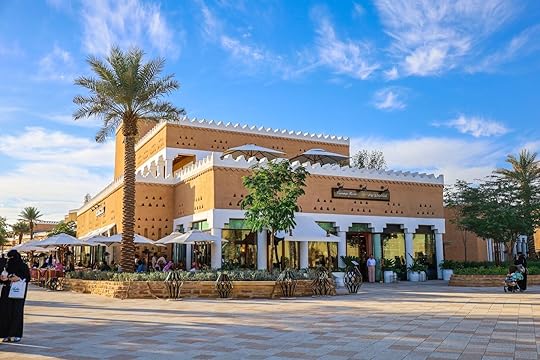
Photo: Ayman Zaid/Shutterstock
While driving around during Riyadh Season — a spectacle of lights, immersive displays, and state-of-the-art showcases — our guide explained, “In 10 or 20 years, we will have everything you need, right here.” With discussions underway to build an eco-friendly city and expand the country’s high-speed rail network, Saudi Arabia seems to be announcing new projects every month, steadily working toward building everything within its own borders.
Saudi Arabia’s recent win to host the 2034 World Cup highlights just how much the country is growing in popularity among travelers, and plans are underway to break ground on what is expected to be the world’s largest Six Flags theme park as part of the massive Qiddiya Entertainment City. Saudi Arabia is also ushering in a green era with ambitious sustainability projects, including the mirrored NEOM city.
The country is continually expanding. And with its continued innovation in eco-friendly desert getaways and Red Sea overwater bungalows, it’s become an enticing introduction to the Middle East. After discussing some of the upcoming projects underway in the country, I asked Khalid Took, our guide, “Is there anywhere you dream of traveling to?” He responded, “Why would I leave? We have everything here.”
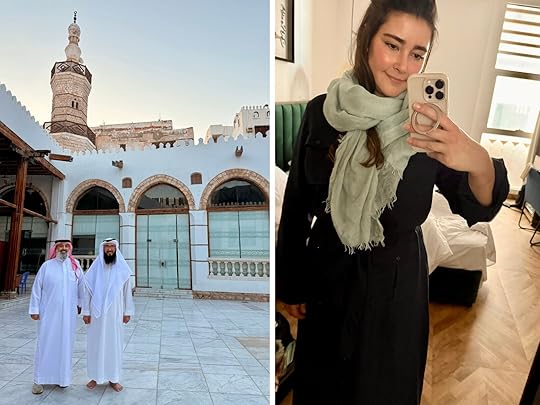
While many citizens still opt for traditional dress, visitors are not required to do the same. Photo: Kelsey Wilking
English was spoken everywhere I went. Learning a few words of Arabic to use while traveling can come in handy, though. My recommendations when traveling: always learn at least three words, not including “hello” (as-salamu alaykum) and “goodbye” (salam, for short). “I’m sorry” (ana asef), “Thank you” (shukran), and “perfect” (mumtaz) are good ones to know.
Many women dress in black niqabs, fully covered except for their eyes, while others opt for a hijab to cover their hair, often paired with an abaya — a long robe that modestly covers everything and is worn over regular clothing. Local Saudis are generally very forgiving when it comes to tourist attire. However, loose and flowy pants and tops for women will protect your skin from the sun while also keeping you cool and dry. There is no requirement to wear a head covering, except when visiting a mosque. For reasons of respect, leave short shorts and tank tops at home.
Men’s clothing is also very traditional. It’s usually a long, white linen shirt that extends from the collarbone to the shins, along with a distinct headscarf. The red-and-white checkered headpiece, worn historically and still today, helps protect against the intense desert sun. The black rope on top, known as the agal, was historically used to prevent camels from wandering off at night in the desert. Nomads would travel with the rope around their arms, tie it to the camel’s halter, and place it back on their heads for safekeeping.
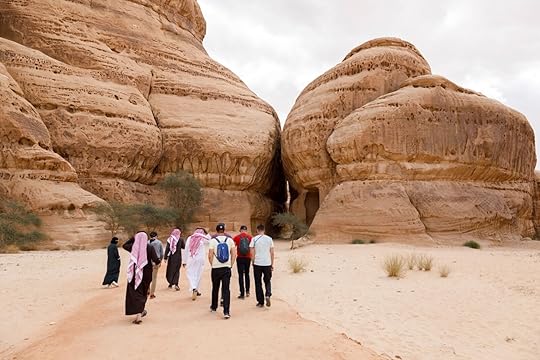
Photo: Fredy Thuerig/Shutterstock
For male travelers, the rules are mostly the same. Wear loose-fitting clothes with modest coverage over elbows and knees. Linen pants and a linen button-up would work.
It’s important to be aware of the call to prayer. Prayer time is sacred, and there are five prayer times per day. In many public spaces, designated areas allow men to pause, kneel, and pray while the prayer is recited over speakers. Prayer spaces are separate for men and women. Be mindful when you hear the call to prayer and show respect to those around you.
While most establishments take credit cards, make sure to exchange some money into the Saudi riyal for the souks and street markets.
Applying for a Saudi Arabia electronic visa is a very fast process. I received mine within five minutes. The cost is approximately SAR 395 (around $105 USD). In the future, the Gulf Cooperation Council (GCC) plans to introduce a visa that would allow travel across multiple countries in the Middle East under one visa: Bahrain, Kuwait, Oman, Qatar, Saudi Arabia, and the United Arab Emirates.
Every country I’ve visited has unique places to see, lovely people, interesting history and art, and beautiful landscapes in their own right. But traveling to Saudi added a new hue to my palette of sand-swept dunes and cerulean blue waters. Saudi Arabia is continually expanding, but its essence remains unchanged. At its heart, it’s a place that tends to its strangers, giving you a feeling of endless possibilities, just like the country itself. 
1.7 Million Phones, Ozempic, and Live Lobsters: The 50 Wildest Things People Left in Ubers in 2024
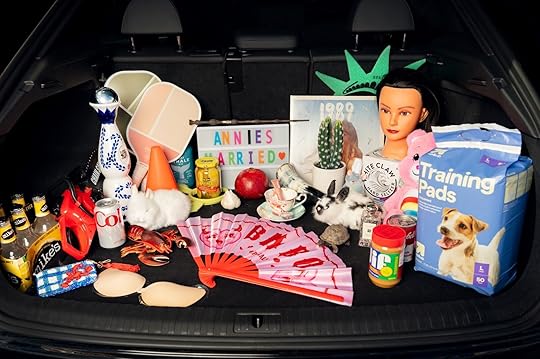
It can feel like our technology is permanently attached to us as soon as we leave our home. Which makes sense: It’s certainly a lot harder to get around without the maps, ride-hailing apps, and payment systems these devices facilitate (not to mention the pure entertainment aspect, regardless of how easy it is to pine for the days when mindless distraction wasn’t just a swipe away).
Yet for all of that, these devices are also the ones that people leave behind in their Ubers the most. Uber’s latest “Lost and Found Index” is a look into the most commonly forgotten items that people file a report for, and things often considered the most essential also happen to be the most left behind. At the top of the list, Apple was the most lost brand in Uber rides in 2024 — particularly iPhones and Airpods. As a whole, 1.7 million iPhones and Androids were left behind on rides, potentially making tipping for that ride and messaging your driver for some help a little more difficult.
The 10 most commonly forgotten items in Ubers:
PhoneWalletKeysLuggageHeadphonesGlassesClothingPassportVapeWater BottleThe top 10 most forgetful cities include New York, Miami, and Chicago — no surprise given the number of riders. Forgetfulness peaked on October 26, the Saturday of Halloweekend, with the 11 PM to midnight window earning the dubious honor of the most item losses.
On a more granular level, the Index finds that riders are most likely to forget gloves on Mondays, jackets on Tuesdays, umbrellas on Thursdays and Fridays, and debit cards on Sundays. People reporting lost cowboy hats, naturally, peaks on Saturdays.
Legal papers like court summons and divorce papers also made the list, Disney merch was the most left behind theme park souvenirs, and Eagles fans left behind more gear than any other sports team. Reports of lost pickleball gear, yoga mats, and pilates socks were on the rise in 2024, too. Sometimes you can win on the field but lose everywhere else. Red items would seemingly be easy to keep track of, yet that was the most lost color. And like the prior year, someone managed to leave behind their pet turtle.
Food was also commonly reported as lost. In a year when eggs were a prized commodity and increasingly expensive and limited, one person left 108 eggs in their Uber. Though that was still a less expensive mental slip than the person who left a bottle of Don Julio 1942 or the person who said they forgot their “filet mignon for my dog.”
The 50 most unique items lost in Ubers in 2024Mannequin head with human hairViking drinking hornGhostbusters ghost trapChainsawBreast milkFine chinaMy turtleUrinalClub promoter sign reading “Annie’s married” – it belongs to the clubSticky boob braAviation headsetShrek earsBermuda shortsA pink fan that has two hearts and the word “bimbo”DNA testing kitPickleball paddles and ball2 mattresses15 hookahsAmethyst crystalAquariumWitches broomUnicycle100 DVDsBouquet of 100 red rosesSea mossTraffic coneA very large portrait of myself in a brown boxYankees bobble head figurePlungerA photograph of me and my friend at BenihanaLittle cactusPeacock featherLady Liberty crownHoverboard and a mini fridgeHarry potter wandSewing machineOrthopedic foot insolesBoiled eggs and a candleDivorce papersOzempicRemy the rat dollBlue laminated paper with yellow smiley faceCornish hensA placard that says “it’s a Philly thing”Fake blood10 live lobstersTaxidermied rabbitChicken sculptureHannah Montana merchandiseDJ mixing boardWorried that one of your possessions will make 2025’s list? Thankfully it’s easy to get in touch with your driver, even if that lost possession was the phone you booked the Uber on: Go to the Activity section on the app, select the trip, hit “find lost item” in the help section, and detail what you lost for your driver. Without a phone, head to help.uber.com. 
11 Airbnb Estes Park Area Rentals for a Beautiful Rocky Mountain National Park Stay

Colorado is the perfect place to sneak away for a while. Rocky Mountain National Park is the place to dig into nature — hiking, scenic drives, camping, fishing, and even backcountry skiing are available in abundance here. Booking an Airbnb near Rocky Mountain National Park puts you close to the action, which then optimizes the amount of time you can spend exploring rather than commuting. Here are the top Airbnb Estes Park and Airbnb Rocky Mountain National Park rentals.
Airbnb Estes Park rentalsAirbnb Grand Lake rentalsAirbnb Colorado Winter Park rentalsAirbnb Granby rentalsTaking a national park road trip? Check out Matador’s national parks accommodations guides:These Stunning Cabins Are the Ultimate Zion National Park BasecampThe best hotels in Utah for a national parks road tripThe best 14 Airbnbs near Yosemite National Park11 magical Airbnbs near Redwoods and Sequoia National ParksThe 9 Best Great Smoky Mountains National Park Hotels10 Airbnb Estes Park rentals near Rocky Mountain National ParkTake a Fun Escape Into Nature at These Airbnbs Near Glacier National ParkThe Perfect Desert Getaway Awaits at These Airbnbs Near Death Valley National ParkSee jawdropping views from these Airbnbs near Grand Teton National ParkAccess Trails and Hot Springs From These Airbnbs Near Olympic National ParkGet the best Shenandoah National Park views from these AirbnbsWe hope you love the Airbnb Estes Park rentals we recommend! Just so you know, Matador may collect a small commission from the links on this page if you decide to book a stay. Listed prices are accurate as of the time of publication.
The best Colorado Airbnb rentals in the Estes Park AreaHip small and bright bungalow with an instrument wall
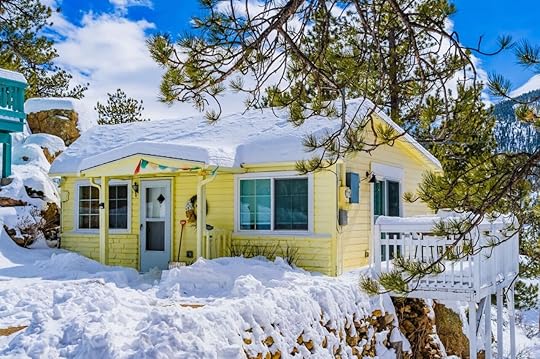 Photo: Airbnb
Photo: Airbnb Photo: Airbnb
Photo: Airbnb Photo: Airbnb
Photo: Airbnb Photo: Airbnb
Photo: Airbnb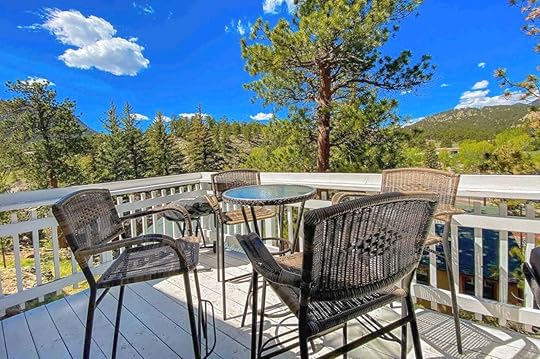 Photo: Airbnb
Photo: AirbnbThis quiet little bungalow sits on a hillside just a few minutes away from downtown Estes Park. The small home features a full kitchen, bedroom, and living room. If musicians are tagging along on the trip, then this is one to bookmark as the home has a piano, guitar, and many other instruments that guests can play and let their creativity run wild. The house has beautiful views of Old Man Mountain and Prospect Mountain right off the deck, and it’s just a five-minute drive to the Rocky Mountain National Park and a walk to local shops, restaurants, breweries, and more.
Four guests, one bedroom
Price: $138 per night
 Photo: Airbnb
Photo: Airbnb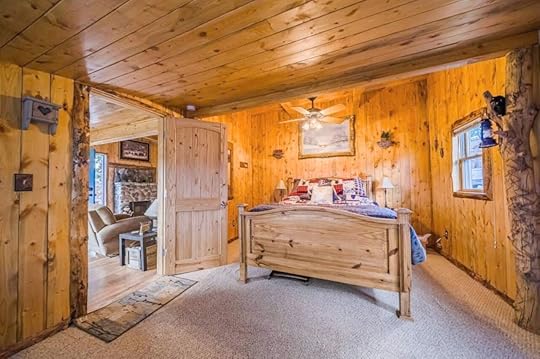 Photo: Airbnb
Photo: Airbnb Photo: Airbnb
Photo: Airbnb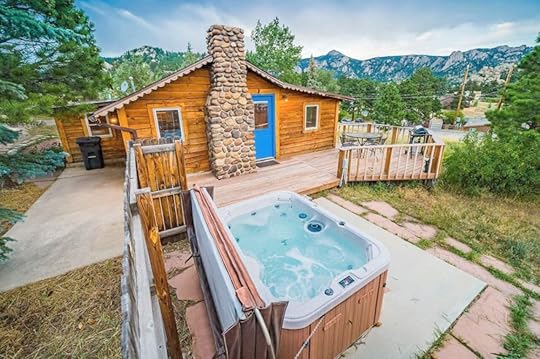 Photo: Airbnb
Photo: Airbnb Photo: Airbnb
Photo: AirbnbBuilt in the late 1800s, this historic cabin has all the amenities you need for your Colorado getaway. The downtown Airbnb in Estes Park is near the Stanley Hotel and an eight-minute drive to Rocky Mountain National Park. There is a kitchen stocked with appliances and complimentary essentials, a living room with a fireplace, a deck that provides beautiful mountain views, and a jacuzzi overlooking Lumpy Ridge, perfect for a post-ski relaxation session.
Four guests, one bedroom
Price: $239 per night
 Photo: Airbnb
Photo: Airbnb Photo: Airbnb
Photo: Airbnb Photo: Airbnb
Photo: Airbnb Photo: Airbnb
Photo: Airbnb Photo: Airbnb
Photo: AirbnbA cozy, secluded sanctuary awaits you on your next Colorado getaway. This three-bedroom home (all bedrooms are ensuite) has an open floor concept perfect for entertaining with the kitchen, living room, and dining room all showcasing stunning views of the mountains. The house is a short five minute drive from downtown Estes Park, ten minutes from Rocky Mountain National Park, and within walking distance to many trails and Mary’s Lake to enjoy a lazy day of fishing.
Eight guests, three bedrooms
Price: $241 per night
Picturesque property with Lake Granbury views
 Photo: Airbnb
Photo: Airbnb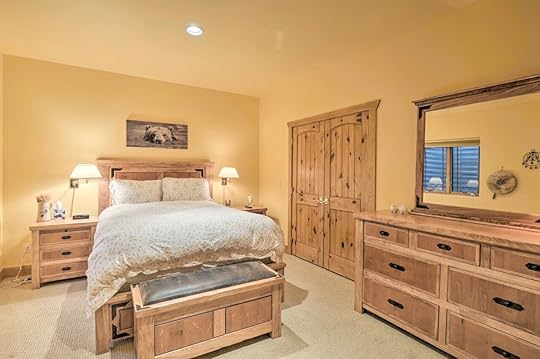 Photo: Airbnb
Photo: Airbnb Photo: Airbnb
Photo: Airbnb Photo: Airbnb
Photo: AirbnbThis 3,555-square-foot home on a 2.5-acre property is calling out to you for your next getaway. The three-bedroom, two-bathroom cabin has all the amenities needed for a relaxing vacation. With Lake Granby views, al fresco dining, a fire pit to gather around, this home is perfect for groups and other family gatherings. You can take the load off in the game room, or hit the nearby hiking trails or slopes at Granby Ranch.
Ten guests, three bedrooms
Price: $285 per night
 Photo: Airbnb
Photo: Airbnb Photo: Airbnb
Photo: Airbnb Photo: Airbnb
Photo: Airbnb Photo: Airbnb
Photo: AirbnbTucked away on the quieter south shore of Grand Lake, this remote cabin is the kind of place you go when you need to hit reset. The two-story cottage sits right on the water and is simple but well-considered, with new furniture, upgraded appliances, and spa-like bathrooms that feel especially indulgent after a long day outside. From late May through mid-October, the private dock and lakeside pergola are open for early-morning paddles and sunset hangs. A canoe, two kayaks, and a paddleboard are included, so you can float through the day or fish from your front yard. Behind the house, Shadow Mountain — part of Rocky Mountain National Park — rises in the distance, offering trails to explore and backcountry to get lost in. The town of Grand Lake is just a mile down the road if you need provisions — or just a coffee and a walk.
Six guests, three bedrooms
Price: $365 per night
 Photo: Airbnb
Photo: Airbnb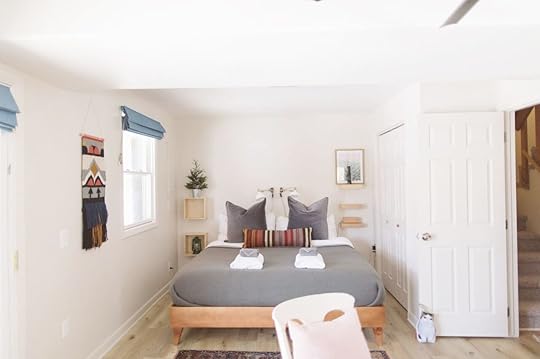 Photo: Airbnb
Photo: Airbnb Photo: Airbnb
Photo: Airbnb Photo: Airbnb
Photo: AirbnbLocated just a mile away from the town of Grand Lake and other recreational hot spots is this cozy a-frame cabin. It’s is perfect for families, and it features a living room with a fireplace and wooden-clad walls, and beamed ceilings. The two large front and back decks have beautiful mountain views as well as the backyard space is a great place for the kids to get outside and play around.
Twelve guests, four bedrooms
Price: $316 per night
Stunning luxury ski-in/ski-out house in Winter Park
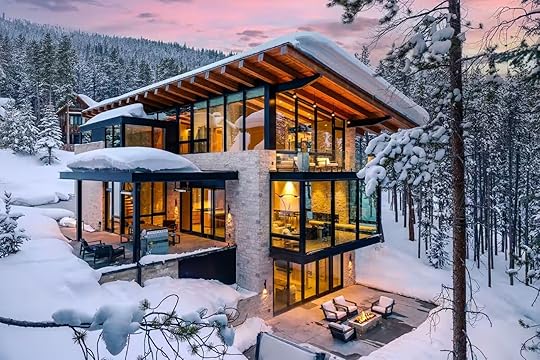 Photo: Airbnb
Photo: Airbnb Photo: Airbnb
Photo: Airbnb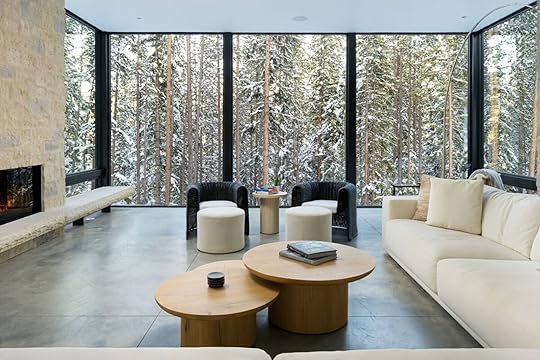 Photo: Airbnb
Photo: Airbnb Photo: Airbnb
Photo: AirbnbIf you’re craving more room to roam and a splash of luxury, this jaw-dropping alpine retreat in Winter Park delivers. In the exclusive Bridger’s Cache community, this top ten percent Airbnb stunner sleeps up to 12 and wraps you in sleek Scandinavian style from the moment you step inside. With four plush bedrooms and four-and-a-half spa-worthy bathrooms, it’s designed for those who want mountain adventure without sacrificing comfort. You can glide straight off the slopes and into the home, thanks to the ski-in/ski-out access. Then, as twilight settles over the forest canopy, slide open the glass doors and step onto your private spa deck with a crackling fire pit and an in-ground hot tub that practically begs for stargazing and après-ski hangs.
12 guests, four bedrooms
Price: $1,265 per night
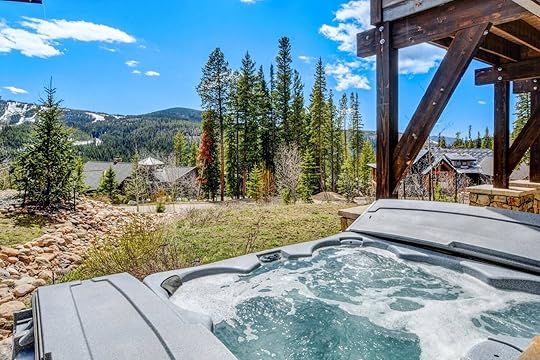 Photo: Airbnb
Photo: Airbnb Photo: Airbnb
Photo: Airbnb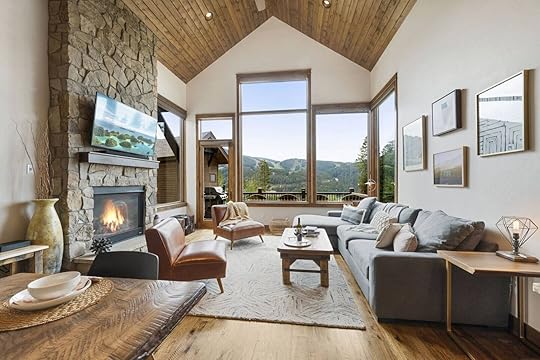 Photo: Airbnb
Photo: Airbnb Photo: Airbnb
Photo: AirbnbThis custom-built three-bedroom home is managed by a professional host and includes daily access to free activities and equipment rentals, such as snowmobiling in winter and whitewater rafting in summer. Located on a hill overlooking Winter Park Resort, it’s steps from the on-call resort shuttle stop. The home offers unobstructed views of both Winter Park and Mary Jane from the kitchen, dining room, living area, and decks.
10 guests, three bedrooms
Price: $585 per night
 Photo: Airbnb
Photo: Airbnb Photo: Airbnb
Photo: Airbnb Photo: Airbnb
Photo: Airbnb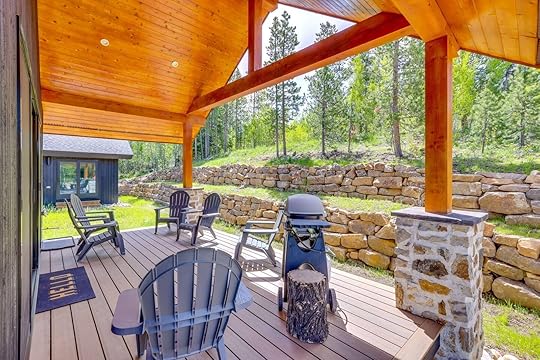 Photo: Airbnb
Photo: Airbnb Photo: Airbnb
Photo: AirbnbAs an EV driver, I love nothing more than an Airbnb with a built-in charging station—and this one has two in the garage. It’s already a win in my book, but there’s more. The modern ski-in/ski-out mountain home is located just below the ski trail “Home Again” in Granby Ranch. The dreamy master bedroom has floor-to-ceiling windows, and the property is close to Ranch Hall, where — for a small admission fee — you can access facilities such as ping pong tables, a gym, a pool, and a hot tub.
Eight guests, four bedrooms
Price: $425 per night
 Photo: Airbnb
Photo: Airbnb Photo: Airbnb
Photo: Airbnb Photo: Airbnb
Photo: Airbnb Photo: Airbnb
Photo: AirbnbJust a short walk from Granby Ranch Resort, this newly built condominium offers a comfortable base for both outdoor and winter activities. It features a fully equipped kitchen with modern appliances, a living room, and a private balcony with mountain views and a picnic table. Beyond the ski slopes, the area also offers nearby hiking and biking trails, scenic routes through Rocky Mountain National Park, and boating opportunities on Lake Granby.
Four guests, one bedroom
Price: $96 per night
 Photo: Airbnb
Photo: Airbnb Photo: Airbnb
Photo: Airbnb Photo: Airbnb
Photo: Airbnb Photo: Airbnb
Photo: AirbnbLocated along the Fraser River, this 1,100-square-foot cabin offers a peaceful setting with enough space for family and friends. It also includes kid-friendly amenities to help keep younger guests occupied and comfortable. Recognized as a top-rated Airbnb based on guest reviews, the cabin also provides views of the Rocky Mountains and easy access to year-round activities, including Hot Sulphur Springs, Colorado Adventure Park, and the Coca-Cola Tubing Hill. 
Six guests, three bedrooms
Price: $224 per night
Matador Network's Blog
- Matador Network's profile
- 6 followers



